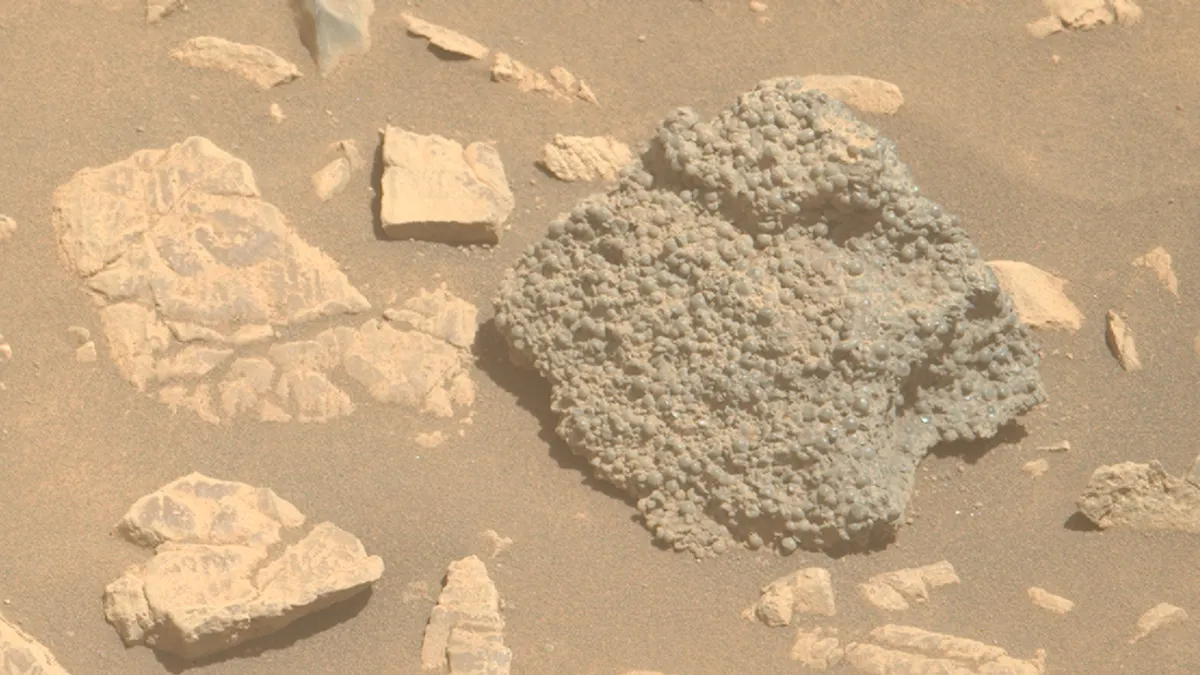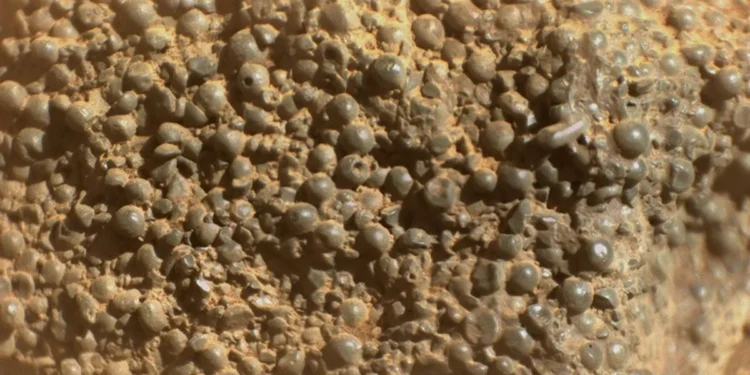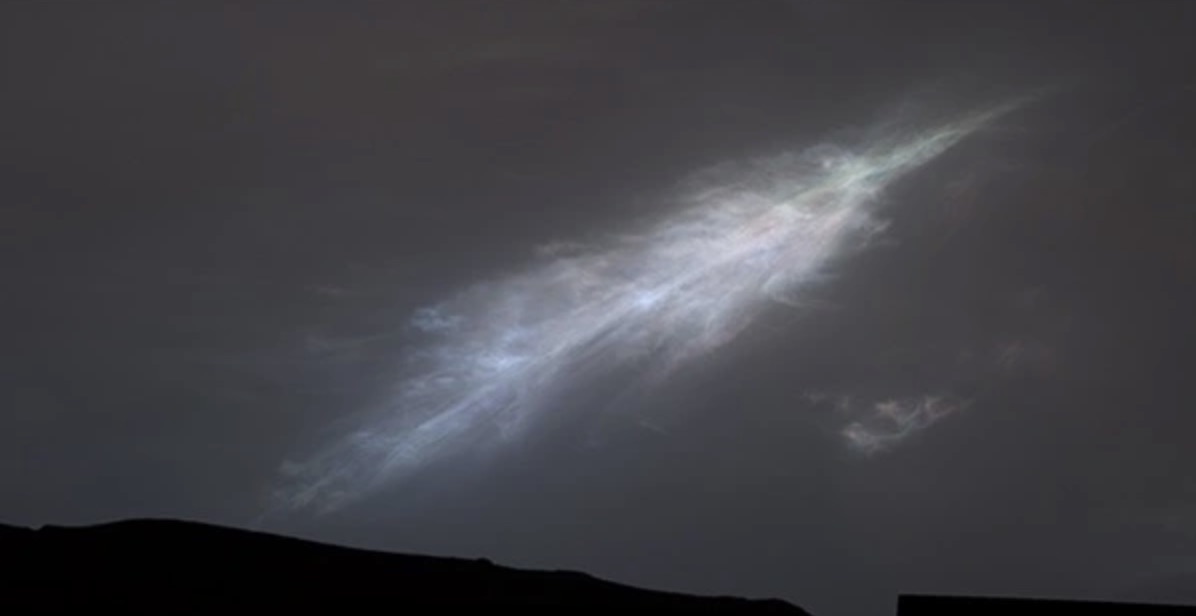NASA’s Mars mission has delivered yet another surprise. While exploring the edge of Jezero Crater, the Perseverance rover came across a strange rock unlike anything in its immediate surroundings—covered in hundreds of tiny, spherical objects that scientists are struggling to explain.
Discovered near an area called Broom Point, the find could hold clues to Mars’ watery history—or point to something more dramatic, like ancient volcanic or impact activity. What’s clear is this: the rock doesn’t match its environment, and its unusual surface texture has triggered intense scientific curiosity.
It Looks Like a Cluster of Miniature Marbles—But What Is It?
The rock, unofficially named St. Pauls Bay, is peppered with dark gray, millimeter-sized spheres that immediately caught the attention of NASA scientists. While some appear round and smooth, others are elliptical or jagged, almost like fragments of broken marbles.
“Some of these occurred as more elongate, elliptical shapes, while others possessed angular edges, perhaps representing broken spherule fragments,” said Alex Jones, a Ph.D. candidate at Imperial College London. “Some spheres even possessed tiny pinholes!”
This isn’t the first time NASA has found spherules on Mars—similar features were observed in other parts of Jezero Crater, and even earlier by the Curiosity rover at Gale Crater. But this particular rock stands out: not only is it unusually textured, it’s also geologically out of place. It’s what geologists call a “float rock”—a piece of material not native to its surroundings. That detail raises even more questions about where it came from and how it ended up there.

Image credit: NASA/JPL-Caltech/ASU.
Ancient Water, Eruptions—or Something Else Entirely?
Spherules like these can form in several ways, and each possibility tells a different story about Mars’ past.
One leading theory is that they’re concretions—structures that form when mineral-rich water moves through porous rock and hardens. That would support the idea that water once flowed through the area, reinforcing previous evidence of an ancient lakebed at Jezero.
But there are other explanations. These spheres could also be the result of volcanic activity, forming from molten rock droplets that cooled rapidly. Or, they might have condensed out of vaporized rock during a violent meteorite impact.
What makes this find even more compelling is its location. Just above Broom Point is Witch Hazel Hill, where orbital images show alternating bands of light and dark-toned rock. The terrain here appears to preserve a complex geological record, possibly dating back to a time when Mars had a dramatically different climate.
Recently, Perseverance collected samples from a rock dubbed Cheyava Falls nearby. That sample contained geochemical signatures that could be linked to ancient microbial activity—offering tantalizing hints about life-supporting conditions billions of years ago.
Now, scientists are asking whether the spherules in St. Pauls Bay might be connected to that same chapter of Martian history.
What Scientists Are Focusing On Now
The team is now analyzing both the spherules and the rock’s surrounding context to try and reconstruct its origin story. Did groundwater carve its way through these rocks long ago? Was there a volcanic eruption in the region—or was the rock thrown here by a distant impact?
These questions won’t be answered overnight. But every new discovery like this adds a crucial piece to the puzzle of Mars’ evolution—and might one day help us determine whether the planet ever supported life. For now, St. Pauls Bay remains one of the most intriguing Martian mysteries in recent memory.











